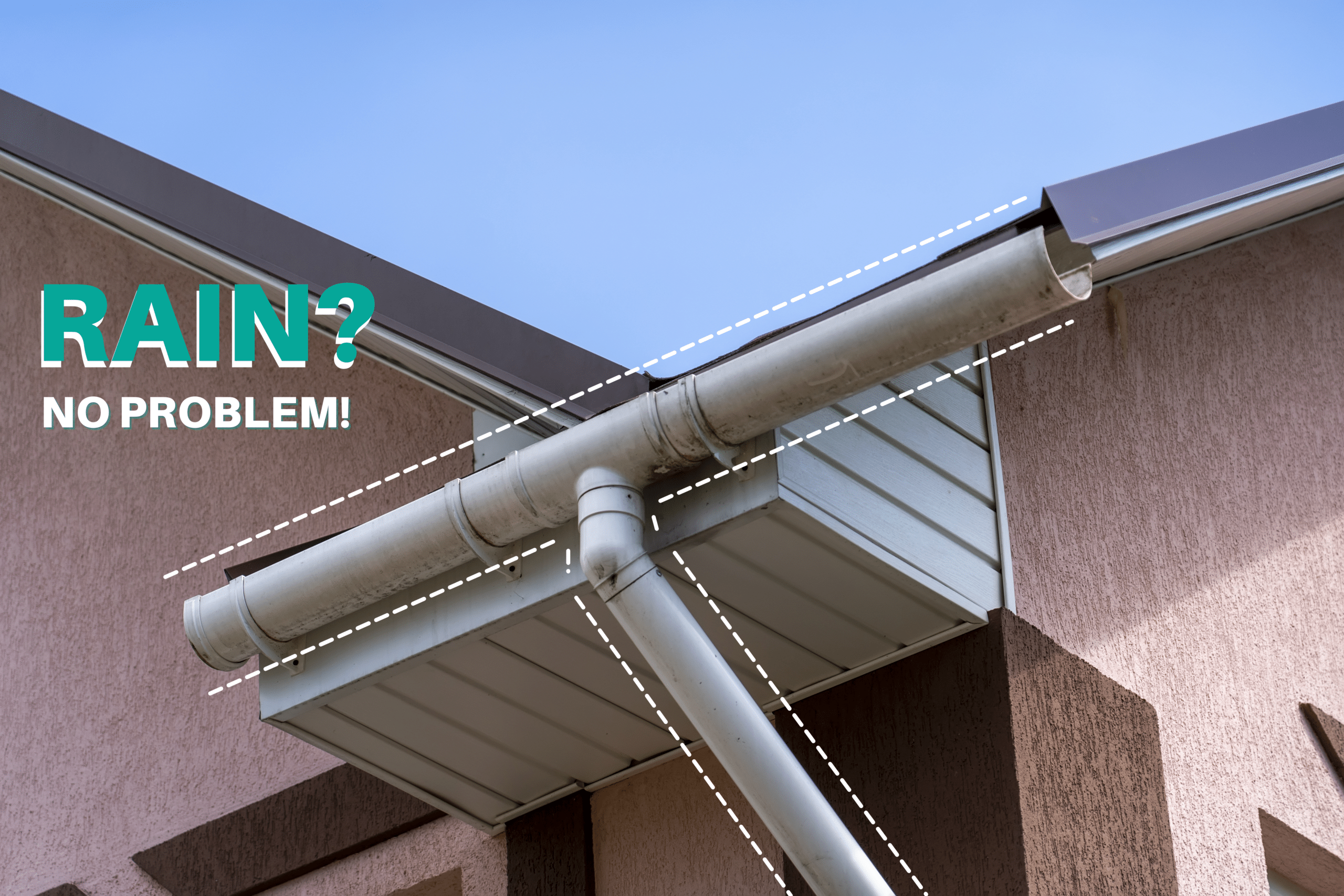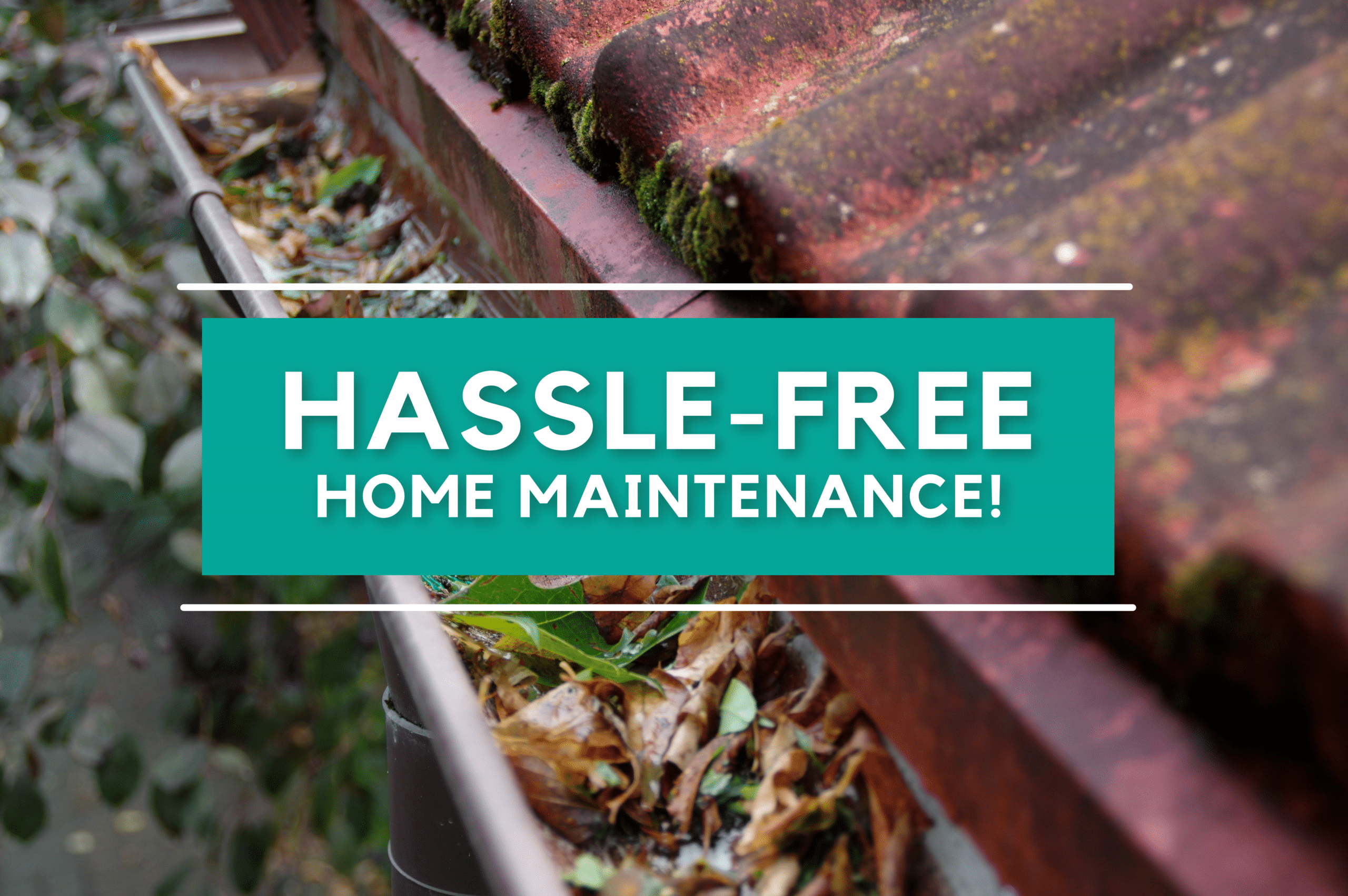If you’re undertaking some home maintenance or indeed are in the process of building a new house, you might have arrived at the question – are gutters necessary? While they undoubtedly serve an important purpose in directing rainwater away from your property, there are actually several gutter alternatives that you may wish to consider for your property.
Should you take the time to notice, the vast majority of houses are replete with standard white guttering that seems to be installed on houses as if it’s as integral as the roof! Builders don’t always introduce homeowners to gutter alternatives and just go with the conventional gutter systems that appear on properties all over the world.
But as you will probably be aware, gutters are almost as high maintenance as your teenage daughter and require regular repairs and cleaning to keep them in good shape.
This article looks at some of the often-ignored issues with conventional gutters and provides a definitive answer to the question – are gutters necessary? Let’s begin by looking at what a gutter system actually is and why they’re installed on properties.
Are gutters necessary?
Although we’ve established that some form of water collection system on the roof is integral to the maintenance of your property, gutters may not necessarily be the perfect solution. In fact, an incredible 99% of gutters installed are likely to fail at some point, often leading people to search for gutter alternatives. Here are some of the most prevalent problems with traditional gutter systems:
- Clogging: By far the most common issue with gutters is how easily they can become clogged. Natural debris like leaves and dirt accumulates in gutters, which prevents water from draining properly. This causes overflows and means your gutters need to be regularly cleaned.
- Sagging: Gutters are installed using hangers, and when they’re forced to carry additional weight from debris, they start sagging. If you don’t notice right away and make the necessary repairs, your gutters could crumble under the weight and fall from the roof.
- Leaking: Sharp debris and stone can cause damage to your gutters, piercing the exterior and causing leaks. As you might expect, leaking gutters causes significant problems when it comes to water drainage and needs to be repaired once noticed.
- Pest infestations: If your gutters are damaged in any way and cause standing water, they become the perfect breeding ground for pests like mosquitos. Understandably, this is one problem you will almost certainly want to avoid!
As you can see, there are a plethora of potential problems with traditional gutter systems. Although they’re installed by home builders almost as standard, you will be pleased to know that there are several gutter alternatives that you may wish to consider if you want to avoid the challenges with traditional systems that we’ve introduced above.
Eight of the best gutter alternatives.
While installing a water management system is vital to the structural integrity of your property, you don’t necessarily have to use traditional gutter systems. In fact, there are many viable gutter alternatives that are cost-effective, aesthetically pleasing, and require much less maintenance than their widely used counterparts. Below, we introduce eight gutter alternatives that you may wish to install at your home:

1. Drip edges.
When viewed from the ground, drip edges look similar to gutters. A drip edge is a metal attachment that is attached directly to the edge of your roof, which then acts as an additional barrier that water must overcome, reducing the speed of the flow of rainwater that cascades down the roof.
Drip edges are effective at preventing water from flowing directly down your walls and directs it away from your foundation line. Also, because they’re usually installed between the roof deck and shingle, drip edges prevent water from seeping into the wood underneath your roof.
As gutter alternatives go, drip edges are an attractive and commonly used rainwater management solution in both domestic and commercial properties, and are certainly worthy of your consideration.
2. Drip paths.
While drip edges are installed at roof level, drip paths are constructed at the foot of your property. As the name suggests, a drip path is a pathway that is built directly underneath the edge of your roof and follows the building all the way around.
It’s possible to construct drip paths in a range of designs and using an array of building materials, but most commonly, they’re a combination of concrete slabs and pebbles that are added to the soil.
The reason for this is that the concrete and pebbles protect the soil from erosion, and as they’re installed at a slight angle, they deflect water away from the building. Some people also install an underwater drainage system that then channels the water collected.
One of the best things about a drip path is that it becomes an additional feature of your property and can be used as a walking path around your home. A drip path is the perfect gutter alternative for homeowners who don’t want to install anything directly at the edge of their roof.
3. Rain dispersal systems.
While drip edges are installed at roof level, drip paths are constructed at the foot of your property. As the name suggests, a drip path is a pathway that is built directly underneath the edge of your roof and follows the building all the way around.
It’s possible to construct drip paths in a range of designs and using an array of building materials, but most commonly, they’re a combination of concrete slabs and pebbles that are added to the soil.
The reason for this is that the concrete and pebbles protect the soil from erosion, and as they’re installed at a slight angle, they deflect water away from the building. Some people also install an underwater drainage system that then channels the water collected.
One of the best things about a drip path is that it becomes an additional feature of your property and can be used as a walking path around your home. A drip path is the perfect gutter alternative for homeowners who don’t want to install anything directly at the edge of their roof.
4. Rain dispersal systems.
Rain dispersal systems are innovative gutter alternatives that almost entirely remove the need for maintenance. One of the most prominent dispersal systems on the market is the Rainhandler, which was invented by an MIT-graduate aeronautical engineer.
The ingenious design of the Rainhandler works by dividing flowing rainwater into small rivulets, which reduces their force and impact. It’s also self-cleaning with an in-built design that removes debris and dirt from the system.
While it might sound like we’re trying to sell the Rainhandler, there are other rain dispersal systems on the market, which also act to break and disperse water away from your property.
As one of the best gutter alternatives on the market, rain dispersal systems are often installed on new homes whose owners don’t want the hassle of constantly cleaning and maintaining traditional gutter systems.
5. Grading.
Supposing you’re currently in the process of building your house, grading is an excellent gutter alternative that naturally drains water away from your property. Working with your architect and a landscaper, you can grade the ground that surrounds your property to ensure your home is at a slight elevation.
By grading your house and ensuring it’s on a slight slope, water will naturally be carried away from your property and its foundation.
Unfortunately for current homeowners, grading isn’t viable as it is expensive and difficult to perform if your property has already been built. However, during the building process, grading is one of the best gutter alternatives and means you don’t have to install anything at roof level.
6. Ground gutters (French drains).
Ground gutters, commonly known as French drains, protect the foundations of your house in the form of a trench that runs around your property.
To install ground gutters, you need to dig a trench in a V-shape, which collects the water at the points where it runs off the roof. The trench is then lined with a waterproof lining before being filled with pebbles. Water is carried through the trench by a simple pipe, which leads it away from the property to an underwater drain elsewhere.
An attractive aspect of ground gutters is that they can be disguised as plant borders and seamlessly appear as part of the aesthetics of your garden. Like many of the alternatives introduced here, ground gutters also require next to no regular maintenance, making them a viable gutter alternative to those hoping to make their lives easier.
7. Hidden gutters
Perhaps the most subtle gutter alternatives are known as hidden gutters or box gutters. They are installed at the roof’s edge and consist of valley-like troughs that direct rainwater away from your property.
People who opt for hidden gutters are attracted by the fact that they’re totally inconspicuous and don’t detract away from the desired aesthetics of your home. These are ideal for those of you that are creating a grand design and don’t like the idea of surrounding your roof with cylindrical, traditional gutters.
Although hidden gutters don’t need a great deal of maintenance, the fact that they’re hidden means you will have to investigate any issues, as opposed to just casting a cursory glance from the top of a ladder.
That being said, hidden gutters are undeniably one of the most attractive and minimalist gutter alternatives available to you and would be an excellent addition to your new home.
8. Copper gutters
We’ve left copper gutters until last because, technically, they’re just traditional gutter systems made from a different material! But compared to plastic gutters, copper gutters are much more attractive, rust-proof, and incredibly durable.
Although you will still need to regularly check your copper gutters and remove any debris, copper is an extremely durable material and will last for a long time. You also don’t need to worry as much about leaks and holes in copper gutters for the same reason.
If you’re not keen on plastic gutters for your house, consider a copper system as a viable gutter alternative. While more expensive, they will look great and last for much longer.
The verdict – are gutters necessary?
Some form of the water management system is a vital component of your property. If you don’t install something to manage the flow of rainwater, you will risk the structural integrity of your home and garden and will struggle to keep water away from your walls, windows, and doors.
But to manage rainwater, you don’t necessarily need to install a gutter system. As we’ve introduced, there are at least eight viable and attractive gutter alternatives for you to consider, meaning you can opt for the system that is best suited to your property.
Installing one of the gutter alternatives introduced above ensures you don’t have to worry as much about the several maintenance challenges commonly associated with traditional gutters while preserving the structural soundness of your property’s foundations.
So, whether you’re in the process of building your new home, or are looking to upgrade the water management system of your current property, consider these gutter alternatives as a viable and cost-effective way of controlling the rainwater that falls onto your roof.

